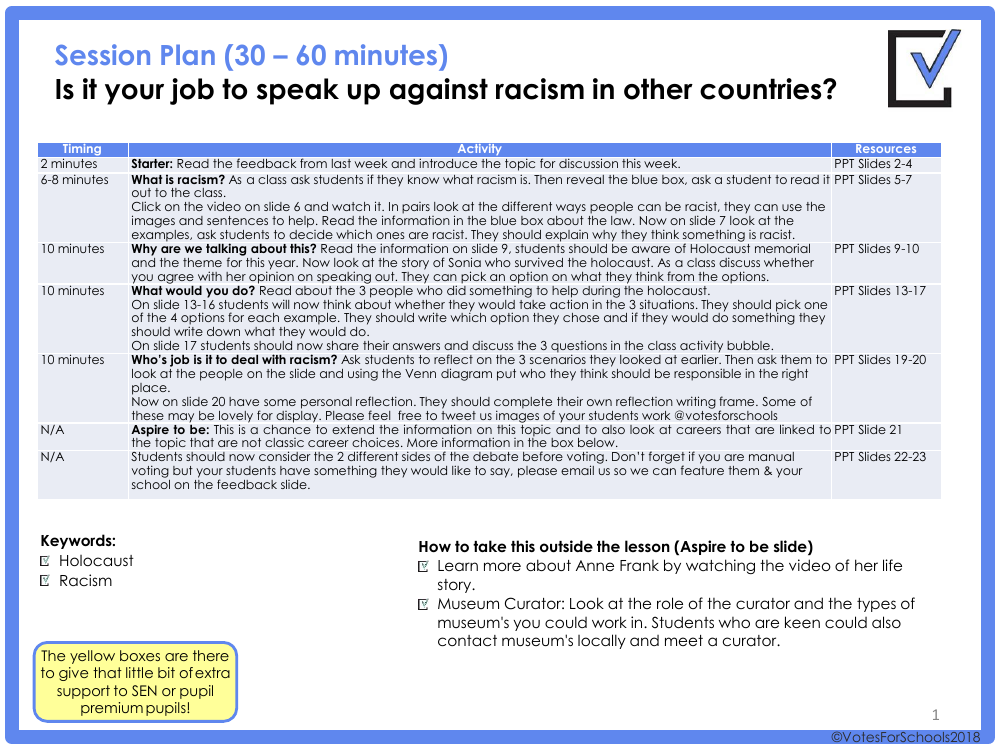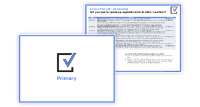Is it your job to speak up against racism in other countries Lesson Plan

English Resource Description
The lesson plan commences with a brief two-minute starter where students revisit feedback from the prior week and are introduced to the current week's topic through PowerPoint slides. The class then delves into understanding racism over the next six to eight minutes. Students are encouraged to define racism, watch a relevant video, and discuss various examples of racist behaviour, using visual aids and legal context provided in the presentation. The aim is to encourage students to identify and articulate why certain actions are considered racist.
Following this, a ten-minute segment is dedicated to discussing the significance of the Holocaust and its memorial. Students engage with the story of a Holocaust survivor, Sonia, and contemplate the importance of speaking out against injustice. The subsequent ten minutes challenge students to consider how they would react in situations of discrimination, drawing inspiration from historical figures who took a stand during the Holocaust. They then share their responses and engage in a class discussion. The lesson progresses to a reflective session where students examine who should be responsible for addressing racism, using a Venn diagram to visualise their thoughts. Personal reflections are encouraged, with the possibility of displaying students' work. The lesson concludes with students weighing the arguments of a debate on whether it is their duty to oppose racism internationally before casting their votes. Additionally, the lesson plan includes suggestions for extending learning beyond the classroom, such as exploring careers related to the topic, like becoming a museum curator, and learning more about Anne Frank's life.

